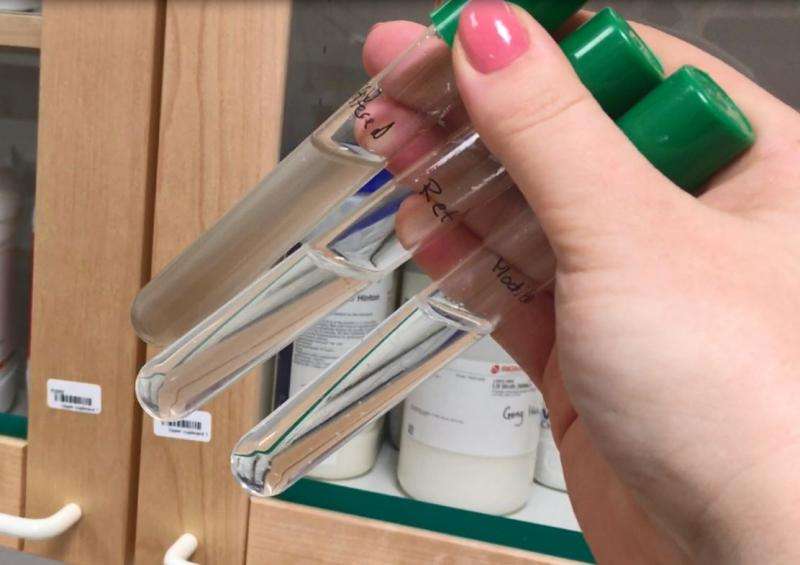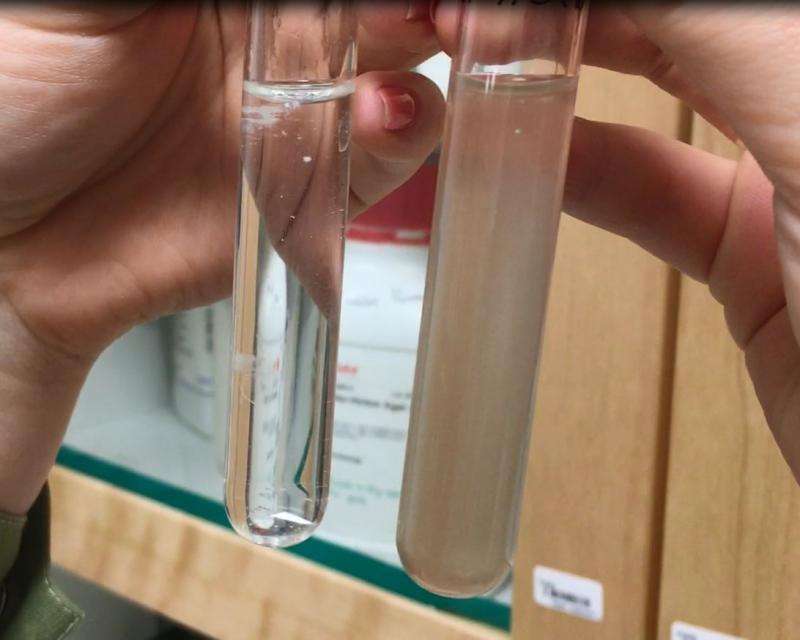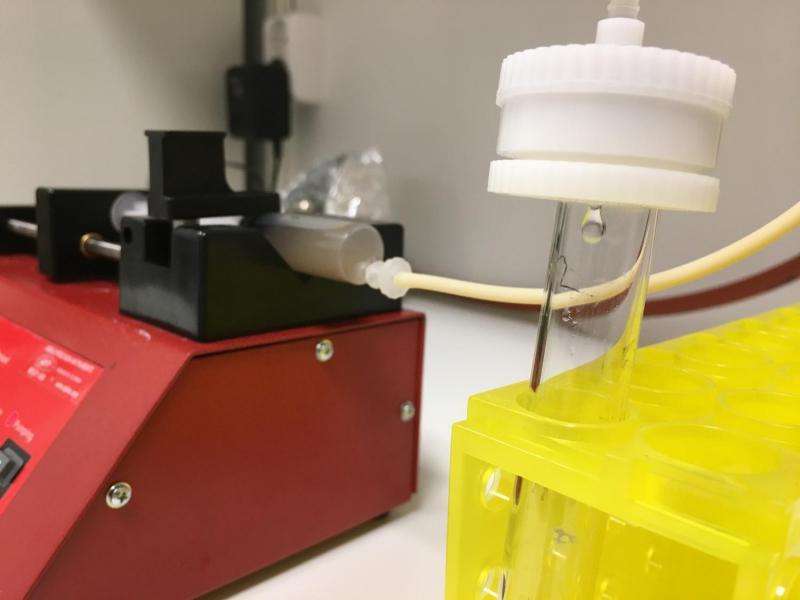The purified water is compared with its original source, as well as a reference sample from the tap. Credit: KTH Royal Institute of Technology
What can the forests of Scandinavia possibly offer to migrants in faraway refugee camps? Clean water may be one thing.
A bacteria-trapping material developed from wood by researchers KTH Royal Institute of Technology is now being tested for use as a water purification filter. The aim is to use it in places where there is no infrastructure or clean water supply.
The material, which combines wood cellulose with a positively-charged polymer, can trap bacteria by attracting and binding the bacteria to the material surface. It shows promise for bandages, plasters and packaging that kill bacteria without releasing toxins into the environment.
Led by Professor Monica Ek, the Swedish research team is investigating whether the material can enable portable on-site water treatment where no facilities or wells exist to meet demand.
"Our aim is that we can provide the filter for a portable system that doesn't need electricity – just gravity – to run raw water through it," says Anna Ottenhall, a PhD student at KTH's School of Chemical Science and Engineering. "The great idea is that we are trapping the bacteria and removing them from the water by our positively-charged filter. The bacteria trapping material does not leach any toxic chemicals into the water, as many other on-site purification methods do."
Labwork shows how water is purified with environmentally-friendly wood cellulose material. Credit: KTH The Royal Institute of Technology
Her co-supervisor, Josefin Illergård, has been working with the antibacterial fibers from wood cellulose for about a decade. "We had this fantastic material that is antibacterial and can be used in different ways, and we wanted to see how to use it in a way that truly makes a difference – a way that addresses a big problem in the world," Illergård says.
Illergård says the fibres are dipped in a positively-charged polymer solution that makes the surface becomes positively charged. Bacteria and viruses are negatively charged and therefore stick to the positively-charged polymer surface. From there, they cannot free themselves and reproduce, and as a result they die.
"One of the advantages of surfaces covered with polymers is that bacteria will not develop any resistance," she says.
Purified water is compared with the source water. Credit: KTH The Royal Institute of Technology
After it is used, the filter can be burned.
The technology is one of several innovative ways wood-based materials are being developed at KTH, which recently has announced advances with see-through wood, squishy batteries made from wood, wood cellulose-based foam, and even a polystyrene alternative from wood.
The water filter project also is just one of the many water-related research projects ongoing at KTH, where a new organizational unit, WaterCentre@KTH, was officially launched on World Water Day 2017 to stimulate cross-disciplinary collaboration and new water-related research approaches within KTH and with industry partners, other knowledge institutions and public agencies.
Water runs through a wood-based antibacterial filter that releases no toxins into the environment. Credit: KTH The Royal Institute of Technology
Provided by KTH Royal Institute of Technology
























